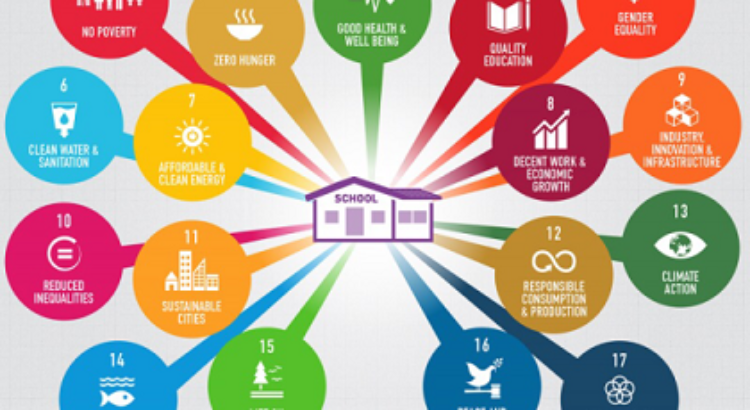Africa/universityworldnews.com
Resumen: La Academia Africana de Ciencias ha pedido una reforma urgente de las políticas nacionales africanas de ciencia, tecnología e innovación (STI) para centrar su atención en las dimensiones sociales y ambientales del desarrollo y alinearlas más estrechamente con los Objetivos de Desarrollo Sostenible de las Naciones Unidas (ODS)
En un estudio clave, África más allá de 2030: Aprovechando el conocimiento y la innovación para asegurar los Objetivos de Desarrollo Sostenible , la Academia Africana de Ciencias (AAS) dice que en 2016 menos de la mitad de los países africanos habían adoptado políticas de CTI. Aquellos que incluyeron a Argelia, Angola, Botswana, Burundi, Etiopía, Egipto, Gambia, Ghana, Kenia, Lesotho, Malawi, Mozambique, Namibia, Nigeria, Ruanda, Tanzania, Túnez, Senegal, Sudáfrica, Swazilandia, Uganda, Zambia y Zimbabue. Sin embargo, la mayoría de estas políticas no consideran los imperativos del desarrollo sostenible de manera integral, señala el informe. «En cambio, tienden a centrarse en la financiación de la investigación científica con menos énfasis en el desarrollo de la tecnología, las adquisiciones y la innovación. Esto puede estimular la producción de conocimiento para el crecimiento económico a corto plazo, pero no estimula la inclusión social y la sustentabilidad ambiental que son necesarias para el desarrollo sostenible a largo plazo «. El informe señala que» los esfuerzos para implementar una política efectiva de CTI están limitados por una política baja alfabetización, capacidad humana débil, supervisión y responsabilidad insuficientes, y presupuestos inadecuados para la
política de CTI «.
The African Academy of Sciences has called for urgent reform of African national science, technology and innovation (STI) policies to sharpen their focus on the social and environmental dimensions of development and bring them in closer alignment with the United Nations’ Sustainable Development Goals (SDGs).
In a key study, Africa Beyond 2030: Leveraging knowledge and innovation to secure Sustainable Development Goals, the African Academy of Sciences (AAS) says that in 2016 fewer than half of African countries had adopted STI policies. Those that had included Algeria, Angola, Botswana, Burundi, Ethiopia, Egypt, the Gambia, Ghana, Kenya, Lesotho, Malawi, Mozambique, Namibia, Nigeria, Rwanda, Tanzania, Tunisia, Senegal, South Africa, Swaziland, Uganda, Zambia and Zimbabwe.
However, most of these policies do not consider sustainable development imperatives holistically, the report notes. “Instead, they tend to focus on funding scientific research with less emphasis on technology development, procurement and innovation. This may stimulate the production of knowledge for short-term economic growth, but fails to spur social inclusion and environmental sustainability that are necessary to long-term sustainable development.”
The report notes that “efforts to implement effective STI policy are limited by low policy literacy, weak human capacity, insufficient monitoring and accountability, and inadequate budgets for STI
policy”.
Red flag
“In effect, our report is a red-flag to African countries that diffusion and adoption of skills in various technologies critical to sustainable development had been too slow,” Dr Evelyn Namubiru-Mwaura, the strategy and policy manager for AAS and editor of the latest study, told University World News in an interview in Nairobi.
According to AAS Executive Director Professor Nelson Torto, most scientific research programmes launched in the past decade have not been realigned with the SDGs and their targets. “We need to bring science and technology to bear on sustainable development targets that are related to reducing hunger and malnutrition, the high burden of disease, water shortages, energy insecurity, social inequality and loss of biodiversity,” said Torto.
He said this could only be achieved if institutions such as the AAS, the New Partnership for Africa’s Development (NEPAD) and the United Nations Economic Commission for Africa, among others, could be co-opted to develop a comprehensive guide for scientists to SDGs, focusing on how science, technology and innovation in Africa could drive those goals and targets.
Pointing to the fact that the AAS and national scientific institutions are the main voices representing science on the continent, Torto said they are better placed to provide leadership in the formulation of credible scientific policies based on expertise of scientists and researchers on the continent.
An urgent challenge
Fast-tracking the science, technology and innovation agenda in Africa is becoming increasingly urgent, as the report notes. According to Dr Ameenah Gurib-Fakim, president of Mauritius, about 65% of children born today will eventually be in jobs that do not exist currently.
“Over the coming decades, jobs will move by the millions from white collar office positions to those in computer, healthcare, scientific research, architectural and engineering fields,” said Gurib-Fakim, who is also the chair of the AAS-supported Coalition for African Research and Innovation.
For Africa this is a major challenge, according to Gurib-Fakim. The continent is home to 15% of the global population and boasts one of the world’s fastest growing populations but only produces 3% of the global gross domestic product (GDP). The continent also suffers 25% of the global burden of disease, including an increase in non-communicable diseases.
The urgent need to accelerate development based on science, technology and innovation was also highlighted by Akinwumi Adesina, president of the African Development Bank, when he addressed the third edition of the Africa Forum on Science, Technology and Innovation held last month in Cairo, Egypt.
Adesina said Africa was in a race against time as the continent is projected to have over 840 million youth by 2050. In the context of the fourth industrial revolution, highlighted by Garib-Fakim in the AAS report, with the rapid growth for instance in artificial intelligence, robotics, nanotechnology, biotechnology, genetic engineering and big data analytics, Africa needs to do more to catch up.
Bright spots
There are “bright spots” in terms of Africa’s development. According to the report, adoption and diffusion of information and communication technologies, especially mobile telephony, has been a bright spot in Africa.
“Platforms such as M-Pesa, the money transfer solution that was initially developed and launched in Kenya, are now common in East Africa, while virtual learning across the continent is improving access to education,” says the report. Similarly, genetic modification in agricultural crops, including cotton, is slowly been adopted on the continent, providing hope for increased food and textile production.
Amid efforts to build and mobilise a robust science, technology and innovation policy platform for Africa’s development, AAS offers itself as an apex institution to spearhead the efforts. It intends to collaborate with other scientific institutions such as the African Centre for Technology Studies, the Africa Technology Policy Studies Network and African universities that offer postgraduate studies on innovation and technology management.
According to Namubiru-Mwaura, plans are under way to set up a pan-African dialogue on how to increase investments in science, technology and innovation initiatives.
She said progress regarding investment in research and development in Africa has been mixed across the various countries. Whereas Algeria, Botswana, Kenya, Rwanda, Namibia and Tunisia have increased their national annual gross domestic expenditure on research and development (GERD), many other countries in Sub-Saharan Africa have reduced their investment.
“Unfortunately, even countries that are considered to be making high investments have not reached the target of 1% of GDP as recommended by the African Union in 2007,” said Namubiru-Mwaura.
According to the report, African research and development is mostly or exclusively externally financed. According to the Global Innovation Index of 2015, about 100% of Mozambique’s, 73% of Uganda’s, 60% of Kenya’s, and approximately 50% of Tanzania’s, Burundi’s and Senegal’s GERD was financed by external sources.
“Funding for scientific research, particularly in Sub-Saharan Africa, is from international donor agencies based in the European Union, the United States and Japan,” says the report.
Thus, if Africa is to forge ahead, the AAS says the continent should stop relying heavily on others for funding of its science, technology and innovation research and development projects. According to the African Development Bank, Sub-Saharan Africa needs to increase its current 0.41% share of GDP devoted to science, technology and innovation by a whopping 400% if it is to catch up with the 1.7% global average.
In its reform agenda for African science, technology and innovation, AAS offers the following recommendations:
- African countries should improve intake and quality of science, technology, engineering and mathematics education in their universities and other tertiary institutions.
- Countries should facilitate researchers’ mobility and joint research and development activities across regions on the continent.
- Countries should improve the quality and relevance of their STI policy frameworks to sharpen focus on the social and environmental dimensions of sustainable development.
- Countries should advance manufacturing technologies and develop specific technology policies and strategies in this area as one way of reducing dependency on imported commodities.
Fuente: http://www.universityworldnews.com/article.php?story=20180302073559245











 Users Today : 42
Users Today : 42 Total Users : 35459948
Total Users : 35459948 Views Today : 48
Views Today : 48 Total views : 3418513
Total views : 3418513